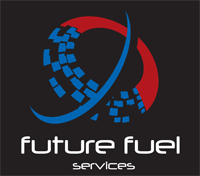Fuel Tank Decommission: Establishing Safe and Effective Removal of Old Fuel Systems
08 October 2024
Essential steps for safe and effective fuel tank decommission. Ensure compliance with environmental regulations and prevent hazards with our guide.
Fuel tank decommission is a critical process that involves the safe and systematic removal of outdated or unused fuel tanks. This procedure is essential to prevent environmental contamination and ensure the safety of surrounding communities. By following proper decommissioning protocols, old fuel systems can be safely dismantled and disposed of, mitigating potential risks.
Understanding Fuel Tank Decommission
Fuel tank decommissioning involves the safe and systematic removal of old or obsolete fuel tanks from service. This process is essential to prevent potential environmental contamination from leaks, spills, or structural failures that may occur as a tank age. The decommissioning process typically includes several stages: assessment, cleaning, dismantling, and disposal.
The Decommissioning Process
The decommissioning process for fuel tanks involves several critical steps to ensure safe and effective removal while minimising environmental impact. Below is a breakdown of the key stages involved in decommissioning a fuel tank:
• Initial Assessment: The first step in decommissioning a fuel tank is to conduct a thorough assessment. This involves evaluating the tank’s condition, checking for any signs of leakage or damage, and determining the presence of any hazardous materials. An environmental impact assessment may also be required, particularly for large or industrial tanks.
• Permit Acquisition: Depending on the tank’s size and location, you may need to obtain permits from local authorities before proceeding with the decommissioning. These permits ensure that the process complies with all relevant environmental and safety regulations.
• Tank Cleaning: Before a tank can be removed, it must be thoroughly cleaned to remove any residual fuel or hazardous materials. This is a crucial step to prevent contamination during the removal process. The cleaning process may involve pumping out any remaining fuel, using chemical cleaning agents, and properly disposing of any waste materials.
• Tank Removal: After cleaning, the tank can be safely removed from the site. This may involve cutting the tank into smaller sections for easier transport or, in some cases, excavating the tank if it is buried underground. Special care must be taken to prevent any remaining residues from spilling during the removal process.
• Site Remediation: Once the tank is removed, the site must be thoroughly inspected and, if necessary, remediated. This involves testing the soil for any signs of contamination and taking appropriate measures to clean and restore the site. Proper documentation of the decommissioning and remediation process is crucial for regulatory compliance.
Safety and Environmental Considerations
Safety and environmental protection are paramount throughout the fuel tank decommissioning process. The risks associated with fuel tank removal include potential exposure to hazardous materials, fire or explosion hazards, and environmental contamination. Therefore, it is essential to follow strict safety protocols and engage qualified professionals with experience in hazardous material handling.
Future Fuel Services: Your Trusted Partner for Fuel Tank Decommissioning
Fuel tank decommissioning is a specialised process that requires expertise, careful planning, and strict adherence to safety and environmental standards. Future Fuel Services is committed to providing safe and effective fuel tank decommissioning services, helping our clients manage their fuel systems the right way.
Optimized by: Netwizard SEO

